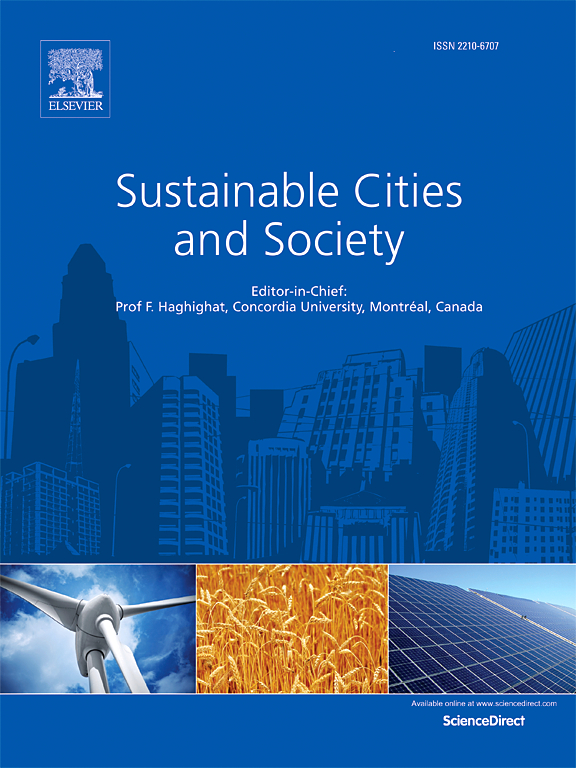Assessing biogenic carbon storage at urban scale through urban building energy modelling
IF 10.5
1区 工程技术
Q1 CONSTRUCTION & BUILDING TECHNOLOGY
引用次数: 0
Abstract
Curbing embodied emissions is essential for reducing greenhouse gas emissions. In the building construction sector, bio-based materials have shown promising solutions in reducing embodied emissions while offering carbon storage potential. This study presents a framework to assess the potential of biogenic carbon storage at the urban scale. A district in Zurich, Switzerland, is selected as the case study, incorporating Swiss-based life cycle data for building construction along with current and projected grid carbon intensities. Our work expands the CityEnergyAnalyst tool to include biogenic carbon data in building archetypes. The effects of retrofit on operational and embodied emissions are evaluated using three representative scenarios: low, intermediate, and intensive retrofit rates. The embodied emissions and the potential for carbon storage are assessed by comparing conventional, low-carbon, and carbon-negative materials. The temporal patterns of emissions show that grid decarbonization and building electrification are essential for reaching net-zero emissions by 2060. Furthermore, increasing the retrofit rate notably curbs operational emissions regardless of the grid decarbonization scenario. For instance, increasing the retrofit rate from 1.0 % to 1.9 % could reduce operational emissions by 16 %. Retrofitting the walls alone could store up to 360 ktCO2 eq. in a district of approximately 2200 buildings. The study underlines that the properties of a carbon-negative material—such as its conductivity and density—play a significant role in biogenic carbon storage capabilities. The findings indicate that a carbon-negative material could boost biogenic carbon storage six-fold compared to low-carbon alternatives.
求助全文
约1分钟内获得全文
求助全文
来源期刊

Sustainable Cities and Society
Social Sciences-Geography, Planning and Development
CiteScore
22.00
自引率
13.70%
发文量
810
审稿时长
27 days
期刊介绍:
Sustainable Cities and Society (SCS) is an international journal that focuses on fundamental and applied research to promote environmentally sustainable and socially resilient cities. The journal welcomes cross-cutting, multi-disciplinary research in various areas, including:
1. Smart cities and resilient environments;
2. Alternative/clean energy sources, energy distribution, distributed energy generation, and energy demand reduction/management;
3. Monitoring and improving air quality in built environment and cities (e.g., healthy built environment and air quality management);
4. Energy efficient, low/zero carbon, and green buildings/communities;
5. Climate change mitigation and adaptation in urban environments;
6. Green infrastructure and BMPs;
7. Environmental Footprint accounting and management;
8. Urban agriculture and forestry;
9. ICT, smart grid and intelligent infrastructure;
10. Urban design/planning, regulations, legislation, certification, economics, and policy;
11. Social aspects, impacts and resiliency of cities;
12. Behavior monitoring, analysis and change within urban communities;
13. Health monitoring and improvement;
14. Nexus issues related to sustainable cities and societies;
15. Smart city governance;
16. Decision Support Systems for trade-off and uncertainty analysis for improved management of cities and society;
17. Big data, machine learning, and artificial intelligence applications and case studies;
18. Critical infrastructure protection, including security, privacy, forensics, and reliability issues of cyber-physical systems.
19. Water footprint reduction and urban water distribution, harvesting, treatment, reuse and management;
20. Waste reduction and recycling;
21. Wastewater collection, treatment and recycling;
22. Smart, clean and healthy transportation systems and infrastructure;
 求助内容:
求助内容: 应助结果提醒方式:
应助结果提醒方式:


